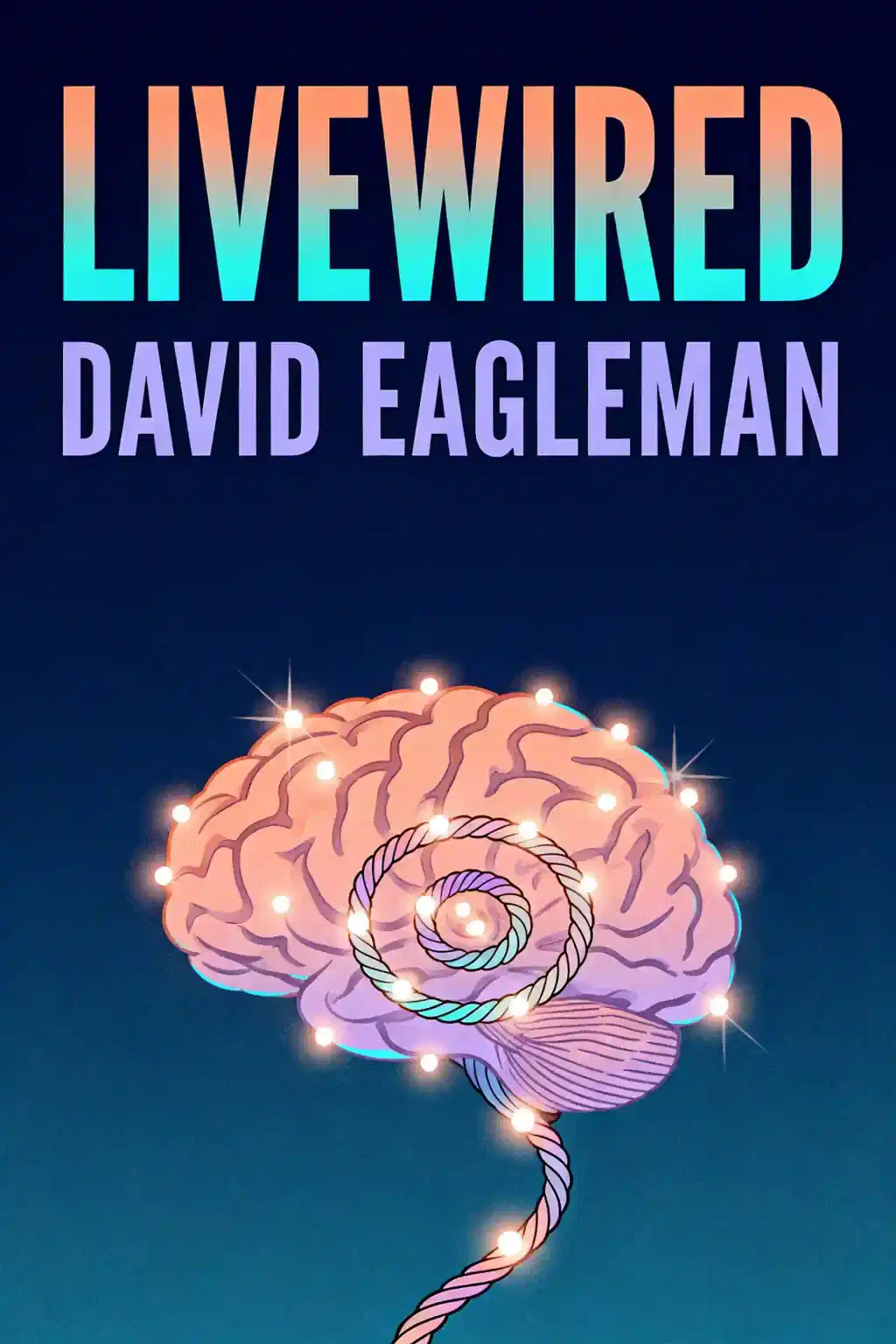What is
Livewired by David Eagleman about?
Livewired explores the brain’s remarkable adaptability, arguing it’s not hardwired but dynamically reshaped by experience. David Eagleman details how neural circuits reorganize through sensory substitution, dreaming, and neurotech, offering insights into synesthesia, memory, and wearable devices that augment human senses. The book merges decades of neuroscience research with bold hypotheses, such as why dreaming evolved alongside Earth’s day-night cycle.
Who should read
Livewired by David Eagleman?
This book suits neuroscience enthusiasts, educators, technologists, and anyone curious about brain plasticity. It’s particularly relevant for professionals in AI, healthcare, or education seeking to understand neuroplasticity’s applications. Readers interested in accessible yet deep scientific narratives will appreciate Eagleman’s blend of research and storytelling.
Is
Livewired by David Eagleman worth reading?
Yes—Livewired is praised for making complex neuroscience accessible, blending cutting-edge research with real-world examples. Critics highlight its relevance to neurotech innovation and its engaging exploration of how brains constantly remodel themselves. It’s ideal for readers seeking actionable insights into adaptability and human potential.
What are the main concepts in
Livewired?
Key ideas include:
- Brain plasticity: Neurons rewire based on experience.
- Sensory substitution: Devices like Neosensory’s wristbands convert sound into tactile signals.
- Dreaming’s purpose: A hypothesis linking REM sleep to combating sensory deprivation.
- Livewiring vs. hardwiring: Brains adapt dynamically, unlike static computers.
What is “brain livewiring” according to
Livewired?
Livewiring refers to the brain’s ability to reconfigure itself in real-time, optimizing function through interaction with the environment. Eagleman contrasts this with traditional “hardware” or “software” metaphors, emphasizing biological adaptability that enables learning, recovery from injury, and sensory augmentation.
How does
Livewired explain the brain’s adaptability?
Eagleman uses a Darwinian framework: neurons compete for resources, with active connections strengthening and unused ones pruning. Examples include blindness sharpening hearing and cochlear implants retraining auditory processing. This “neural Darwinism” underpins lifelong learning.
What role does dreaming play in
Livewired’s thesis?
Eagleman proposes dreaming evolved to simulate sensory input during prolonged darkness, preventing neural atrophy. This nightly “defragmentation” maintains brain flexibility, ensuring readiness for diverse daytime stimuli.
Can the brain adapt to entirely new senses, per
Livewired?
Yes—Eagleman’s work with Neosensory demonstrates devices can translate novel data (e.g., stock market trends) into tactile or visual signals the brain learns to interpret. This “sensory addition” reveals livewiring’s potential to expand human perception.
What are key takeaways from
Livewired?
- Lifelong adaptability: Brains remodel at any age.
- Environment shapes identity: “There is no you without the external.”
- Neurotech frontier: Wearables could unlock new sensory dimensions.
What are notable quotes from
Livewired?
- “The brain is an organ that converts sparks in the dark into the euphonious picture show of your world”: Highlights perception as an active construction.
- “Thanks to livewiring, each of us is the world”: Emphasizes how environments mold cognition.
How does
Livewired differ from other neuroscience books?
Eagleman focuses on practical implications—like neurotech—rather than abstract theory. His accessible style contrasts with academic texts, using anecdotes (e.g., synesthetes tasting words) to illustrate complex concepts.
Are there criticisms of
Livewired?
Some argue Eagleman’s speculative ideas (e.g., dreaming’s evolutionary role) lack conclusive evidence. However, most praise the book for bridging neuroscience and everyday life, offering a visionary yet grounded perspective.
How is
Livewired relevant to understanding AI development?
Eagleman’s “liveware” concept challenges AI’s static algorithms, arguing future systems should emulate neural adaptability. This parallels debates in AI ethics and neuromorphic computing.















